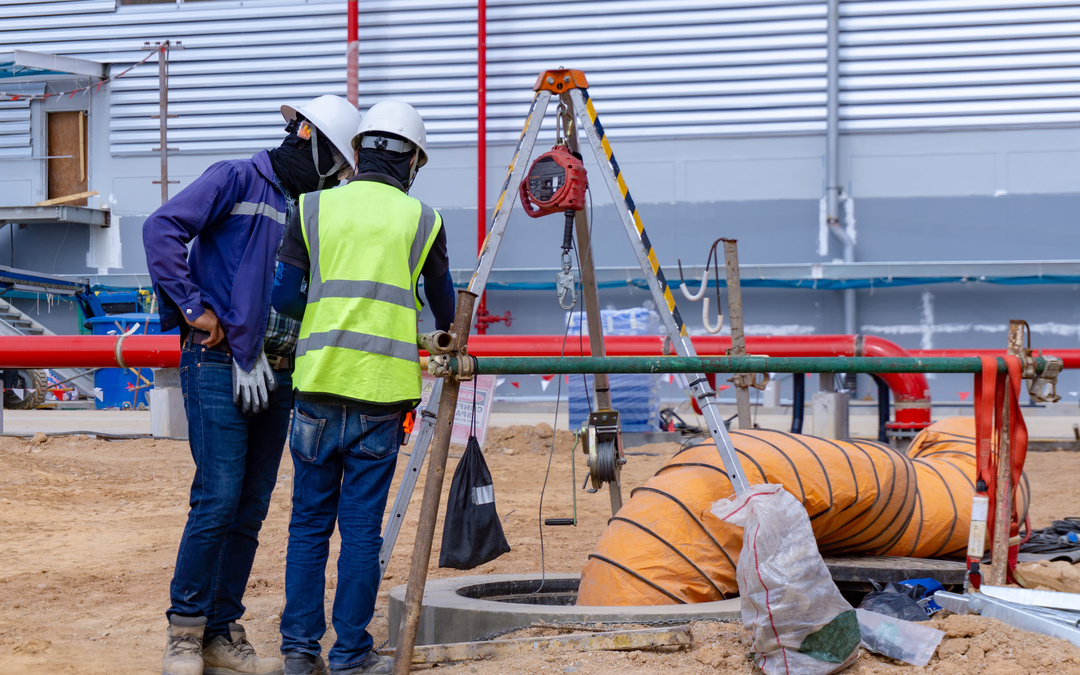Understanding Confined Space Standard: OSHA 1910.146
Understanding Confined Space Standard: OSHA 1910.146
October 30, 2022 |
Per OSHA (Occupational Safety and Health Administration), for every 10 accidents involving confined spaces, there is one death. Unfortunately, when the circumstances faced by an initial victim also put the would-be rescuer at risk, rescue is frequently succumbed by them, too. This results in injuries and even death.
To protect employees, OSHA 1910.146 – the Permit Required for Confined Spaces standard – is in place. It contains practice and procedure requirements involving confined spaces and entry into them. It is in place to guard against the hazards that could threaten the safety of employees working in such situations.
Note: It does not apply to shipyard employment, construction, or agriculture.
What Are Confined Spaces?
Though relatively self-explanatory, some examples of confined spaces include the following:
- Silos
- Storm drains
- Pits
- Utility vaults
- Pipelines
- Tunnels
- Storage bins
- Tanks
For the express purposes of inspections, installations, repairs, and maintenance, these spaces are entered by roughly 1 1/2 million workers annually. Confined space workers face risks on an increased level. Hazards that can result in physical injury include the following:
- Dangerous atmospheric conditions
- Engulfment
- Entrapment
To prevent confined space incidents, the first step is to not only understand applicable standards where confined spaces are concerned, but to evaluate the potential hazards.
OSHA Standards
To determine if a permit is required for a specific space, workplaces must be evaluated by general industry employers. If permit spaces are contained within a workplace, employees who could be exposed must be made aware by the employer. They must understand the location, existence of hazards, and potentially posed hazards.
What’s more, unauthorized confined space entry must be prevented by employers. Bolted connections (and other restrictions) should secure entry portals to prevent unauthorized entry. Training for confined space awareness, danger signs being posted at entryways, and more also help prevent entry by unauthorized personnel.
Hazardous Conditions
Hazardous conditions must be detected and controlled in confined spaces. Some of the hazards that could be presented in a situation such as this include the following:
- Trips and slips
- Noise
- Electrical, mechanical, and thermal hazards
- Hazardous solid or liquid materials
- An atmosphere that could be considered hazardous
- Any situation that would make it impossible for “self-rescue”
The most common threat of those just listed is an atmosphere that could be considered hazardous.
Until effective measures are taken that would allow safe entry, entrance into a permit required confined space is not allowed. To prevent unauthorized entry, effective means must be taken by the employer who controls the space. To ensure that any hazards are sufficiently eliminated and/or controlled, an entry supervisor is tasked with issuing a permit and assessing hazards prior to entry.
Existing Hazards and New Permits
If, during entry, hazardous conditions are detected, the space must immediately be evacuated by employees. The space must then be evaluated by the employer to find the hazardous condition causes. As necessary, the program must be modified. The entry supervisor must then issue a new permit before any work in the area can resume.
When changes occur in their configuration or use, non-permit confined spaces need to be evaluated. Specifically as permit spaces, they must be reclassified if it’s appropriate. Only upon the elimination of serious hazards (per standards put forth by OSHA) can a non-permit classification be assigned to a space if it has no atmospheric hazard potentials (or other serious risks). If, to obtain data and/or eliminate hazards, entry is required, permit-required entry procedures must be followed by the employer. This applies until hazards and the elimination of them can be validated by the employer.
Even with the right training – although the best emergency response team available would come to the rescue of your employees – you want to avoid such situations at all costs. The safety of your team and the reputation of your company are at stake. If you’re unsure as to whether or not a permit is needed, make sure no work is done in the area until that question is answered.
Rescue Solutions Can Help Your Company Be in Complete Compliance With OSHA Standards
For over 100 years, Kentuckians have stayed safer at work using our services. We are Rescue Solutions, the most highly reviewed and rated rescue training, emergency rescue equipment, and safety company in the region. We commit, daily, to the creation of safer environments in the workplace. We make careers safer, and therefore better, for your employees. We understand that everyone wants to go home safely to their friends and families at the end of the workday.
Working with Rescue Solutions guarantees assistance that applies to real-world scenarios and meets all regulatory compliances. When your business needs rescue training, safety training, rescue equipment – or safety and rescue services – you can rely on us. We’re here for you… and your team.
Got questions? Would you like to speak to a representative? Feel free to contact us by using our convenient online form, or phone us at 859-412-1512. We look forward to speaking with you.
